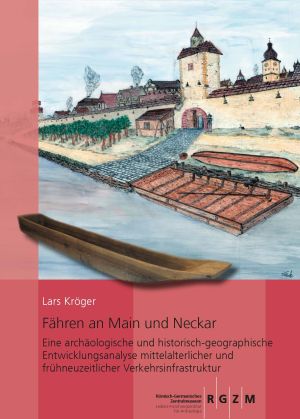
How to Cite
License

This work is licensed under a Creative Commons Attribution-ShareAlike 4.0 International License.
Published
Fähren an Main und Neckar
Eine archäologische und historisch-geographische Entwicklungsanalyse mittelalterlicher und frühneuzeitlicher Verkehrsinfrastruktur
Rivers such as the Main and Neckar in Germany are the heart of many cultural landscapes. They connect spaces and enable a variety of cultural and economic developments along their banks. At the same time, they form a barrier not easy to cross. Especially at navigable river sections, a reliable infrastructure needs to be provided, that does not disturb or only minimally interferes in the usability of the river. River crossings represent bottleneck situations in road systems. They possess a political and monetary value demanding for regulation and control. For prehistoric periods only fragmented information is accesseable, the medieval and early modern times show a profound complexity of circumstances. The solution to solve this issue is in most cases the use of ferries.
The present study analyses the available archaeological and written sources for the river systems of Main and Neckar in southern Germany. This provides a comprehensive picture of the development of river crossings. The archaeological analysis is based on the exceptional number of 121 logboat finds from the working area. In most cases, they have been parts of complex ferry constructions. This incomparable number allows the definition of local and temporal differences, sets them in contrast with finds from other European regions and gives the opportunity for reliable technical reconstructions.
To solve questions on ownership, legal basis and general use conditions of ferries and bridges published written sources from medieval and modern times on 241 river crossings in the area have been examined and evaluated. They represent a complex system of rights and duties concerning liege lords, ferrymen and ferry passengers. At the same time, it became obvious that fords in typical means did not play a role on navigable rivers other than expected. In this way, this study offers a profound glimpse into regional and supra-regional transportation systems in the heart of Middle Europe.






